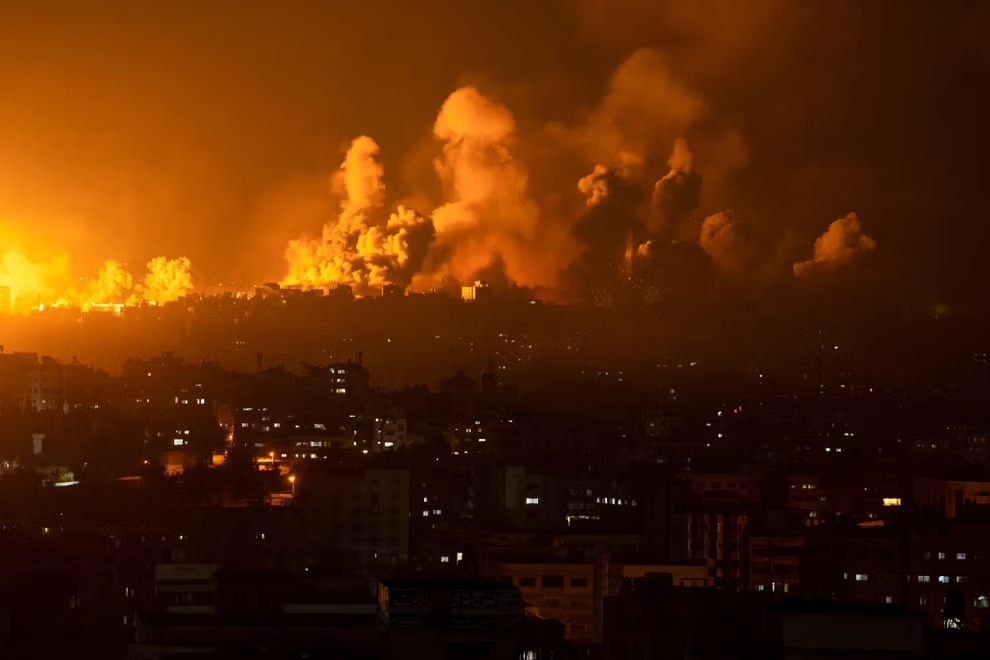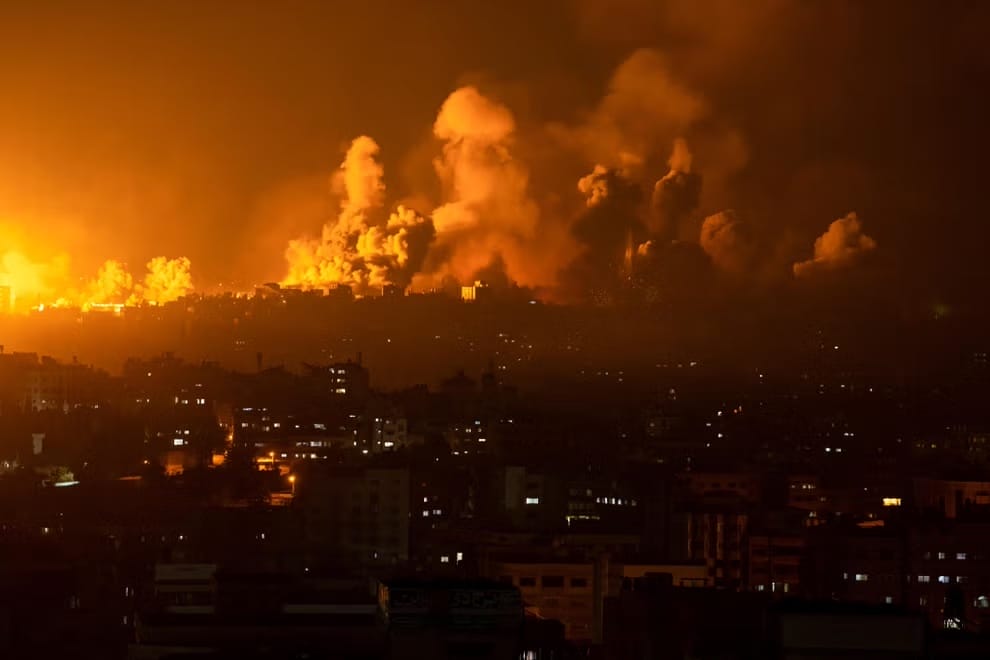CommandEleven is honored to welcome Dr. Claude Rakisits, Honorary Associate Professor of International Relations at Australian National University and Visiting Research Fellow at the Centre for Security, Diplomacy and Strategy at Vrije Universiteit in Brussels, Belgium.
The present Hamas-Israeli conflict, which is bigger than anything Israel has seen for at least 50 years, is a game-changer for the region, regardless of the outcome of the war. Hopefully, the conflict doesn’t expand involving more external players which would compound an already catastrophic humanitarian situation. However, that hope is fast diminishing with every passing day. After the dust settles on the battlefield, a negotiated solution to the 75-year-old Israel-Palestine conflict will need to be found around a negotiating table. There’s no other option.
Current situation
On 7 October 2023, thousands of heavenly-armed Hamas fighters broke through the Gaza-Israeli barriers and attacked several nearby Kibbutz, a military base and a music concert attended by thousands of young people. In an indiscriminate killing frenzy, which lasted several hours, Hamas terrorised young, old, and handicapped civilians by killing, mutilating, and burning 1400 of them, and wounding another 5000. No mercy was shown. This massacre was recorded on body cameras found on some of the 1500 Hamas terrorists subsequently killed by Israeli soldiers. Hamas eventually returned to Gaza taking with them over 200 hostages. A senior member of Hamas referred to the massacre as a “defensive operation” to Israel’s “crimes of occupation”. The Palestinian Islamic Jihad (PIJ) also took several hostages. Although the largest number of hostages come from Israel, about 25 other nationalities are represented among them. These actions, specifically terrorist acts, by Hamas and the PIJ are banned under Article 33 of the Geneva Conventions of 1949. At the time of writing this report, four hostages had been released unharmed.
In its aim to eliminate Hamas as a fighting force following Hamas’s attack, the Israeli Defence Forces (IDF) have been pummelling Gaza, particularly, but not solely, the northern part, targeting Hamas military targets, sources of rocket attacks into Israel and Hamas leaders’ hideouts. Sadly, but quite deliberately, these Hamas military assets are generally in highly populated civilian areas. Put differently, Hamas is effectively using the civilian population as human shields in the hope that the IDF would desist from bombing them. This hasn’t happened. On the contrary, Israel has massively increased its bombardments in preparation for an expected full-blown ground operation. Already, the IDF has increased its ground entries into Gaza, briefly engaging Hamas fighters.
Israel has also cut off all water, electricity, food and fuel into the territory. While Israel does not recognize it as such, these Israeli actions are tantamount to collective punishment—an act that is banned under Article 33 of the Geneva Conventions of 1949. At time of the writing, according to Hamas’s Health Ministry, more than 7000 Palestinians had been killed. While this figure in impossible to independently corroborate, in the past the Health Ministry’s death toll figures have been relatively accurate. In his discussions with the Israeli Minister of Defence Yoav Gallant, US Defence Secretary Lloyd Austin has underscored the “importance of protecting civilians… focussing on the urgency of humanitarian aid delivery for civilians in Gaza”.
Regardless of the precise number of civilian casualties, the humanitarian situation in Gaza is now catastrophic. This is even after Israel agreed for a couple of dozen truckloads of aid to be delivered—a drop in the bucket of desperate need. Under international pressure, Tel Aviv has agreed to allow more supplies of food, water and medicine through the only entry point into Gaza, the Rafah border post on the Egyptian border. The UN Secretary-General made a desperate plea to the UN Security Council on 25 October that a ceasefire be agreed to between the parties to allow the hostages to be released and desperately needed aid delivered. Similarly, following a summit meeting of Arab leaders in Cairo on 23 October, a joint statement was issued asking for the UNSC to demand an “immediate and sustainable ceasefire”. On 27 October, the UN General Assembly passed by 120 to 14 against and 45 abstentions a non-binding resolution calling for an “immediate, durable and sustained humanitarian truce”.
In the wake of the 7 October events the Israeli government has three categories of objectives: short-term, mid-term and long-term.

The 2023 Israel-Hamas War
Dr. Claude Rakisits is an Honorary Associate Professor in the Department of International Relations at the Australian National University. He’s also a Visiting Research Fellow at the Centre for Security, Diplomacy and Strategy (CSDS) at the Vrije Universiteit Brussel (VUB) in Brussels.
His academic interests are South Asia, the Middle East and Africa. Before going into academia some 20 years ago, Dr. Rakisits had worked in the Australian public sector in the areas of defence, strategy, foreign affairs and intelligence. He has taught international relations and diplomacy in Australia, US, Canada, Switzerland and Belgium. He has been the academic adviser at the Australian War College, and he taught strategic developments in the Indo-Pacific at Georgetown University in Washington DC. He comments and publishes regularly for Australian and international think tanks and media outlets.




